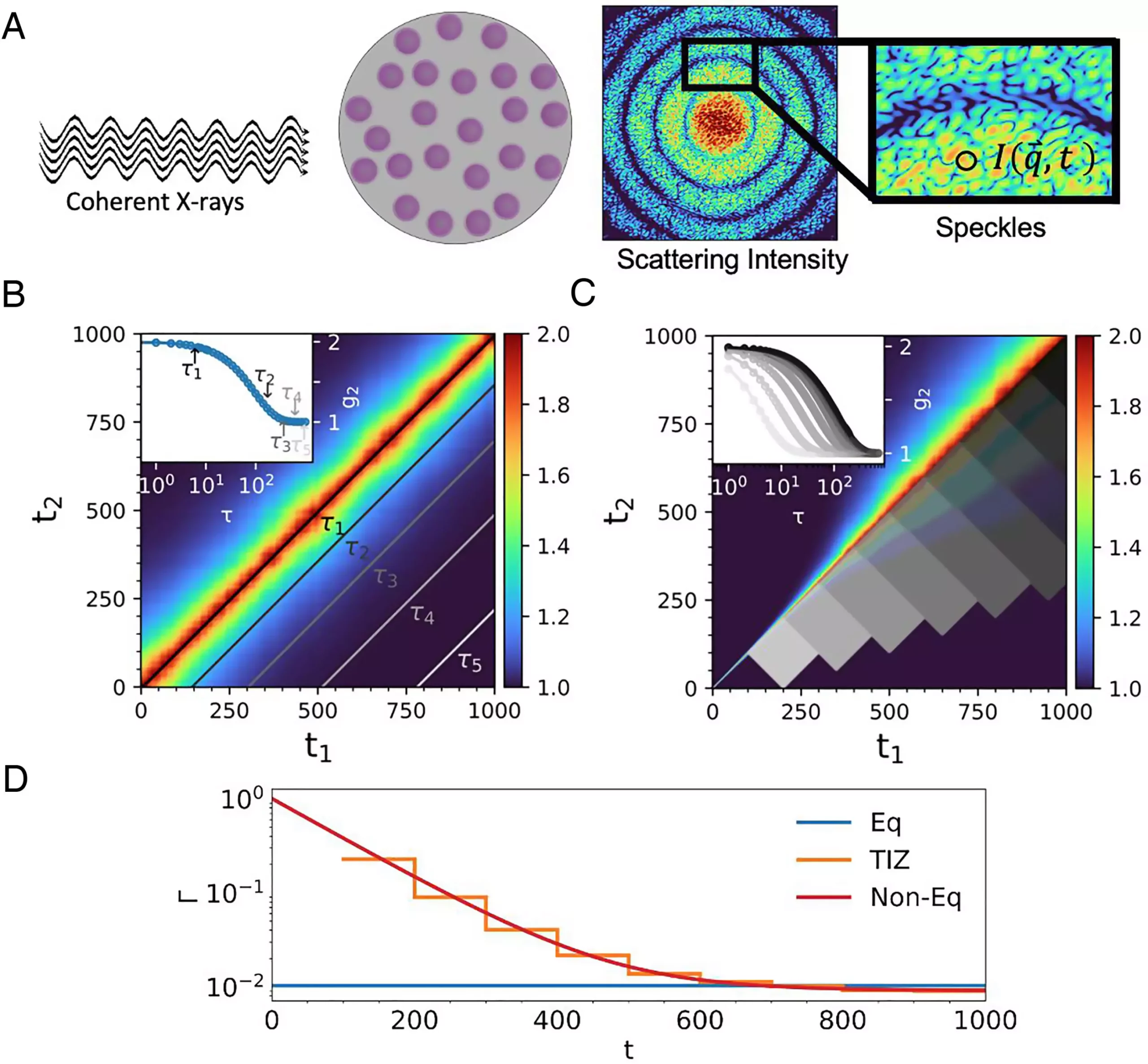The innovative world of soft matter has long fascinated scientists, as it encompasses a wide range of materials that exhibit unique flow properties under various external conditions. From the ingenious play-dough that has delighted children for decades to more complex materials such as paints and gels, understanding the behavior of these substances at the atomic or nanoscale is critical to advancements in numerous fields. Recently, a significant breakthrough from researchers at the U.S. Department of Energy’s Argonne National Laboratory and the Pritzker School of Molecular Engineering at the University of Chicago has shed light on the intricate dynamics of soft matter, utilizing a sophisticated technique known as X-ray photon correlation spectroscopy (XPCS).
Soft matter, a term that encompasses substances easily deformed through applied force, temperature changes, or chemical reactions, constitutes a substantial portion of both everyday materials and advanced technology. The versatile nature of soft matter can be seen in common products like mayonnaise and latex paint. Matthew Tirrell, a senior scientist at Argonne, emphasizes that understanding soft matter behavior is crucial for applications ranging from industrial processes to biological systems. Take paint as a case in point. Once applied to a surface, it must adhere without running, a behavior governed by the material’s underlying molecular interactions.
A newly developed algorithm from Argonne and the University of Chicago aims to facilitate a deeper understanding of these interactions, particularly under varying external conditions. Graduate student and lead author HongRui He articulated how this novel technique can reveal the complex fluctuations in the behavior of soft matter nanoparticles when subjected to applied forces.
Historically, scientists have struggled to precisely correlate flow behavior and nanoparticle interactions with the bulk properties of these materials, often losing valuable data through averaging methods in previous XPCS experiments. The team’s state-of-the-art method effectively captures detailed nanoscale dynamics, providing a means to calculate crucial transport coefficients that characterize a material’s flow. This is a monumental leap in soft matter research that has remained largely uncharted until now.
To conduct these groundbreaking experiments, the researchers utilized the Advanced Photon Source (APS), a premier facility that produces a unique and sensitive X-ray beam capable of probing the minutiae of disordered materials over time. This facility’s capabilities provided suitable conditions to explore a dense mixture of charged spherical particles suspended in a salt solution, simulating the complexities of soft matter.
An intriguing aspect of the study involved an experiment that replicated the shearing action one might encounter in everyday life, such as rubbing lotion between one’s hands. When the shearing force was applied to the mixture of charged particles, the researchers observed three distinct bands of motion within the suspension: fast-moving, slow-moving, and static. Over time, the fast-moving band dissipated only to reappear after a brief interval, revealing dynamic properties that traditional analysis methods could not capture.
These observations not only deepen our understanding of soft matter flowing but also open doors for future research into material behavior in fluid dynamics. The implications are profound, suggesting relevance not just in industrial contexts but also in natural phenomena such as landslides or even human health, particularly in understanding plaque growth in arteries.
With exciting advancements continuously on the horizon, the APS is undergoing a substantial upgrade that will enhance the brightness of its X-ray beams significantly. This improvement is expected to elevate XPCS research to unprecedented levels, allowing scientists to delve even deeper into understanding the complex behaviors of soft materials. Anticipated new beamlines dedicated to XPCS will commence operations in late 2024, providing fresh opportunities for experimentation and analysis.
The ongoing work at both the APS and the Center for Nanoscale Materials underscores the collaborative spirit of contemporary scientific research, pooling expertise to tackle complex challenges. By unveiling the hidden dynamics of soft matter, these insights will serve as foundational tools for future explorations, potentially influencing various fields like chemical engineering, materials science, and biophysics.
The strides made in understanding soft matter through enhanced XPCS techniques have profound implications for both fundamental research and practical applications. The ability to probe the atomic and nanoscale behaviors of materials could lead not only to advancements in technology but also to a deeper understanding of natural processes. As scientists continue to explore these intricate phenomena, we may soon find ourselves better equipped to predict and manage the behaviors of complex materials in our ever-evolving world.


Leave a Reply